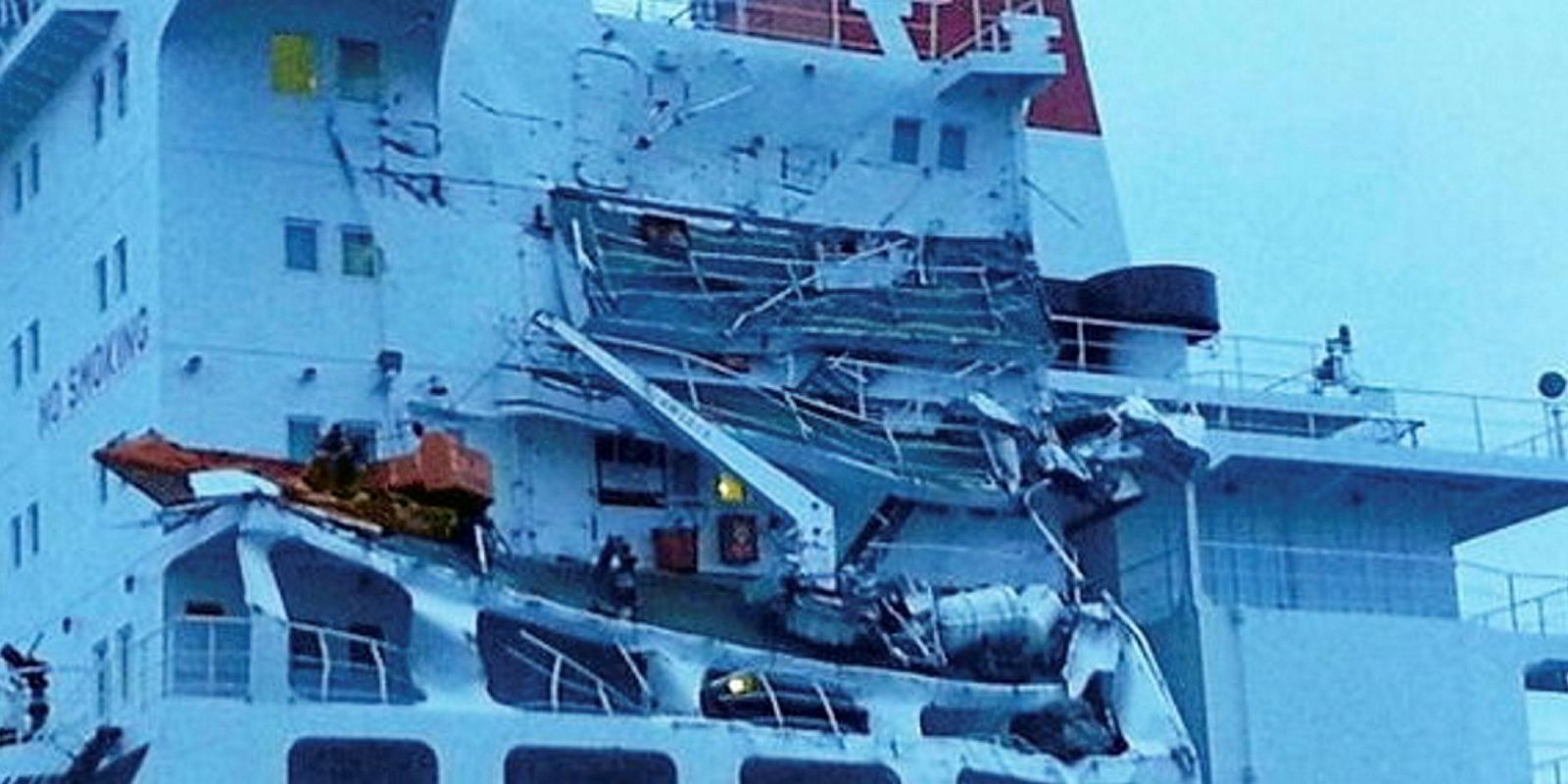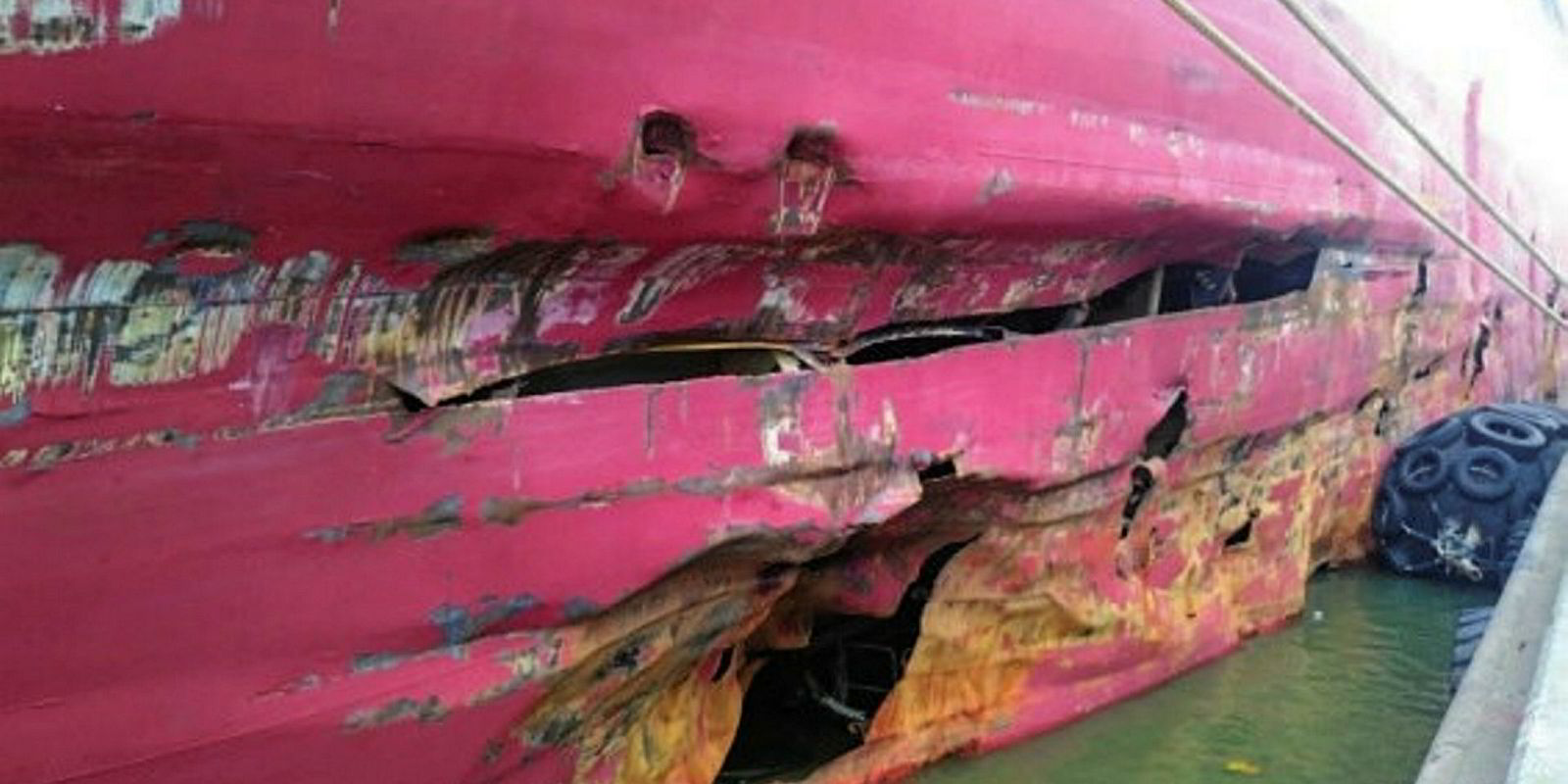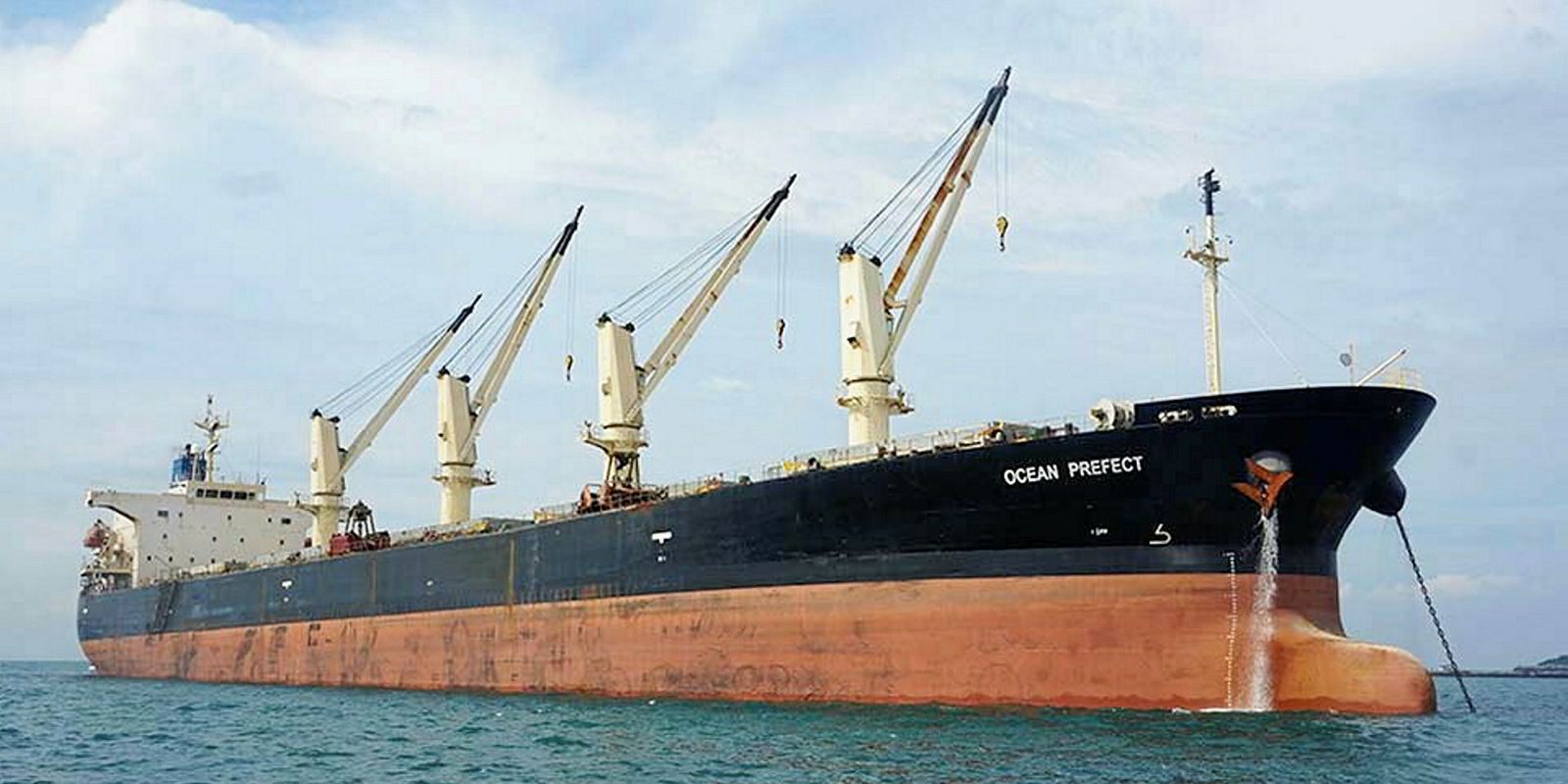A cargoship grounded off the UK due to an insufficient length of anchor cable and an overwhelmed chief officer, an accident report has revealed.
The 2,400-dwt Islay Trader (built 1992) got stuck off Margate on 8 October last year after dragging its anchor.
The Marine Accident Investigation Branch (MAIB) said the Barbados-flagged vessel came to rest right next to one of Sir Anthony Gormley's sculptures of human figures.
The ship was refloated 12 hours later with indentations to its bow and bent frames.
The MAIB investigation found that the vessel dragged its anchor because the length of anchor cable used was insufficient in the tidal conditions experienced.
It added that the chief officer, a 42-year-old Filipino, did not monitor the ship’s position and was not aware it had dragged its anchor until alerted by the London vessel traffic service (London VTS).
The master was not told about the dragging because the chief officer did not want to disturb him, and he was confident he could reposition the vessel himself, MAIB said.
After weighing anchor, the chief officer soon became uncertain of the ship’s position and was overwhelmed by the situation, it added.
"The navigational practices on board Islay Trader were adversely impacted by the pressures resulting from having only two bridge watchkeepers," it said.
"Turn your vessel to the north"
A London VTS officer had contacted the ship in a recorded conversation.
London VTS: Can you check your position, you may have dragged anchor? I advise you to proceed to the south, approximately half a mile to the south for the deeper water for the anchorage.
The chief officer instructed the chief engineer to start the vessel’s engine and two crew to heave in the anchor.
London VTS: Position is good to anchor, there. Do not proceed any further south.
Islay Trader (IT): Yeah, OK thanks for that. I will see where we are. Thanks for that information [unintelligible].
London VTS: Islay Trader, proceed to the north, turn your vessel to the north. No further to the south.
IT: Yes, understood. I’m turning now to the north, turning to the north, thank you.
Meanwhile, other crew also advised the chief officer via hand-held radio that the vessel was getting close to the shore lights and the chief engineer had asked the chief officer: “Where are you going?”
IT: Errrr, London VTS, Islay Trader. I’m still turning to the north but still not moving [unintelligible].
London VTS: Islay Trader, yes turn your vessel to the north. Do not proceed any further south, your vessel will be into shallow water shortly. Turn your vessel north.
IT: London VTS, this is the Islay Trader. I still are pushing my ship astern but still not moving yet.
The vessel eventually settled onto a slipway, very close to the Gormley sculpture.
A subsequent flag state inspection found poor implementation of navigational procedures and limited passage planning.
It also found that although watchkeeping rotas were posted for all crew, they were not followed.
In addition, records of hours of rest were not being recorded accurately.
Not enough cable
MAIB found only three shackles of chain cable were used.
"For an anchor to achieve its maximum holding power, sufficient cable must lie along the seabed before rising to the hawse pipe," it said.
"In this case, although the sandy seabed afforded reasonable holding ground, the change of the cable’s scope caused by the flooding tidal stream and the rising tide was sufficient to raise the lead of the cable.
"Consequently, the anchor’s holding power was reduced until the vessel entered the shallower water towards Margate Sand."
MAIB added that the chief officer would inevitably have taken several natural breaks during the time he was carrying out passage planning and chart corrections, which would have afforded opportunities for him to check the radar or plot a fix.
"That he failed to do so for almost three hours indicates that position monitoring was a very low priority," it said.
Manager Faversham Ships has issued a fleet circular to inform its masters of the circumstances of this accident and to emphasise the importance of adherence to onboard procedures.
The master has been replaced and an additional navigation officer employed on the ship.
It has been transferred to the UK flag and renamed Neptune.






